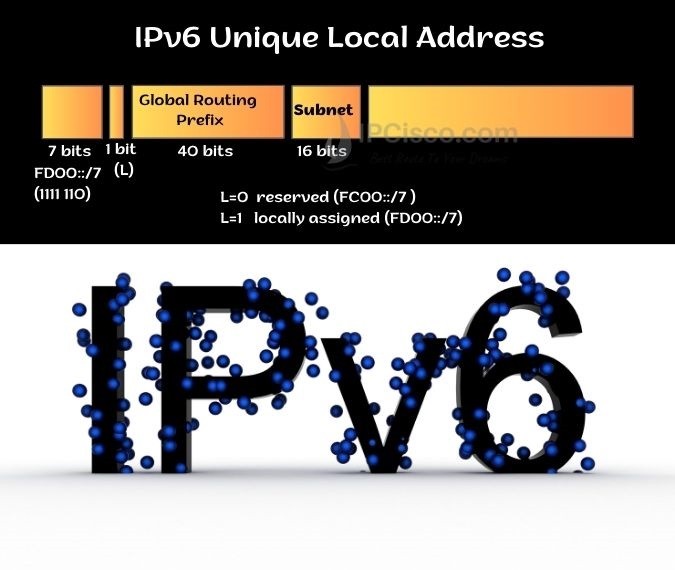- COURSES
- SPECIALS
- BLOG
- MEMBERS
- SHOP
- ABOUT
- ENROLL HERE

There are different types of IPv6 Addresses. One of these IPv6 type is IPv6 Unique Local Addresses (ULA). In this lesson, we will focus on this IPv6 address type and we will learn the details of these addresses. This lesson is an important lesson both for Cisco CCNA and CCNP ENCOR. Let’s firstly start with What is IPv6 Unique Local Addresses?
Cisco Packet Tracer IPv6 Address Configuration Example
Table of Contents
Unique Local Addresses (ULA) are one of the IPv6 Address types. These IPv6 addresses are non-routable on Internet like IPv4 Private Blocks.
As you remember, we use IPv4 private ip blocks only inside the networks not to use real ip blocks. The IPv6 version of these addresses are Unique Local Address. We use this type of IPv6 in local networks. If we use IPv6 NAT, then we can use these addresses on Internet.
IPv6 Unique Local prefix is FC00::/7. Here, the high level 7 bits are fixed as 1111 110. Only the last bit can be changed. And this offers us two blocks. The Unique Local Blocks are given below:
Here, the first block, FC00::/7 is reserved Unique Local block. The second block, FD00::/7 is the locally assigned, used block.
Below, the parts of Unique Local Address are given. According to this shape, Unique Local address has 7 bits fixed part, 1 bit L part, 40 bits Global Routing Prefix, 16 bits Subnet ID and 64 bits Interface ID.
As an IPv6 Unique Local example, let’s write an example.
Our used prefix is FD00::/8, It is 8 bits. And our 40 bits random Global ID part is 11:2222:3333. Here, we will combine these parts as 48 bits and it is FD11:2222:3333::/48. Here, there are 65536 /64 subnets are available.
From FD11:2222:3333::/64 to FD11:2222:3333:FFFF::/64. Any IP address between these range can be an example of IPv6 ULA.
IPv6 Unique Local Addresses (ULAs) are analogous to IPv4 Private addresses. We can use them freely without any registration inside our networks. We can isolate inside network from the outside network by using these non-routable IPv6 addresses.
As you know, we use private ip address ranges in IPv4. In other words, there are some ip blocks that are used privately inside different networks. These addresses can not be used on internet. The name of these blocks are IPv4 Private IP Addresses. In IPv6 world, Unique Local Addresses (ULAs) are used for the same reason. The private block of IPv6 is Unique Local Address Block.
What are the IPv4 private ip ranges, let’s remember:
Unique local addresses and link local addresses are two different address types used in IPv6. What are the difference between these two types of IPv6 Address?
The prefix of ULA is FC00::/7, while the prefix of IPv6 Link-Local Address is FE80::/10. Unique Local Addresses are used in a local domain and in this domain, it can be routed. But remember, it is not routable in Internet. IPv6 Link Local Addresses are used only on a segment between two nodes.
Leave a Reply